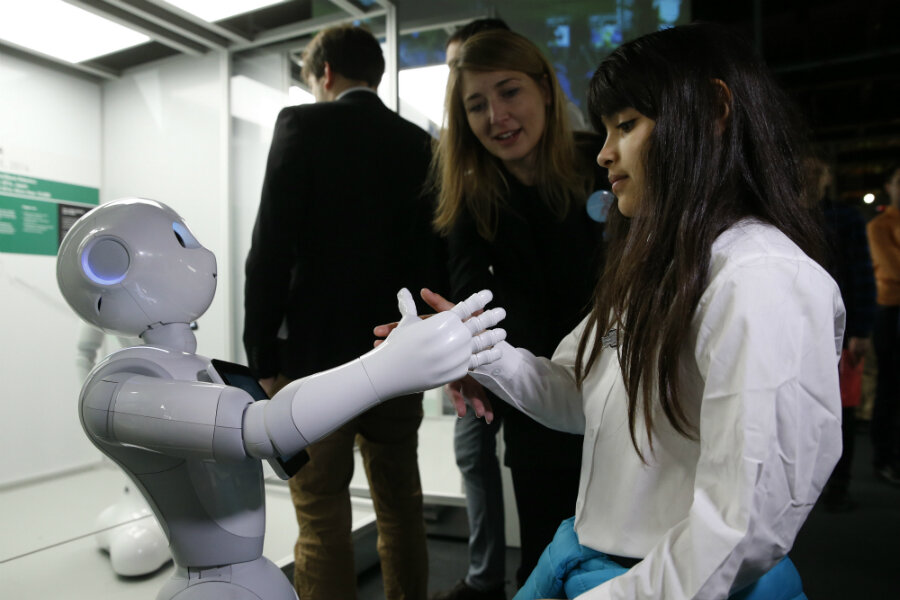Will a robot take your job? New London exhibit traces their evolution.
Loading...
The word “robot” entered the English lexicon in 1920 by Czech writer Karel Čapek, for a play about soulless, mass-produced workers that overrun humanity.
Nearly a century later, that word is the title of a nine-month exhibition opening today at the Science Museum in London. “Robots” takes a longer – and more positive – attitude towards lifelike machines.
“When you take a long view, as we have done with 500 years of robots, robots haven't been these terrifying things, they've been magical, fascinating, useful, and they generally tend to do what we want them to do,” Ben Russell, the exhibit’s lead curator, told the Associated Press.
From a 16th-century clockwork monk built for King Philip II of Spain, to a contemporary bot called RoboThespian that sings and takes selfies with guests, many of the exhibit’s specimens were built to entertain. Other likely crowd-pleasers include an 18th-century clockwork swan made from solid silver, and the T-800 robot featured in the 2009 film “Terminator Salvation.”
Some of the other robots serve more serious purposes. These include Baxter, a two-armed robot made for factory or laboratory work, and Kaspar, a “minimally expressive social robot” designed to help children with autism learn facial expressions.
Art critic Mark Hudson, who reviewed “Robots” for British newspaper The Telegraph, wrote:
“The exhibition uses each of [the robots] to pose questions about what we want from robots, ranging from the worthy – can gender-neutral robots help us become a more equal and inclusive society? – to the practical – if robots are going to ‘take’ our jobs, should the companies using them pay income tax on their behalf?”
With concerns growing that automation will replace human workers, these kinds of questions are more relevant than ever.
What about the science-fiction staple of robots run amok, introduced by Čapek along with the word itself?
Some may think that it’s getting closer: Last week, The Christian Science Monitor reported that an artificial intelligence program had beaten some of the world’s best poker players at No-Limits Texas Hold ‘em Poker, marking a major gain for AI. In a futuristic look, the 2004 movie "I, Robot" has Will Smith battling intelligent humanoids in the year 2035.
But the London exhibit demonstrates that, for the moment, robots need their human masters. Mr. Hudson concluded that guests will leave “very likely reassured by their still limited capabilities. They can’t yet go upstairs and need their batteries frequently recharging – by us.”
But even if robots aren’t about to pose a threat to humanity, Mr. Russell expects them to become a bigger part of our lives in coming years. And if these machines are “going to come along,” he told the AP, “you've got a stake in how they develop.”








